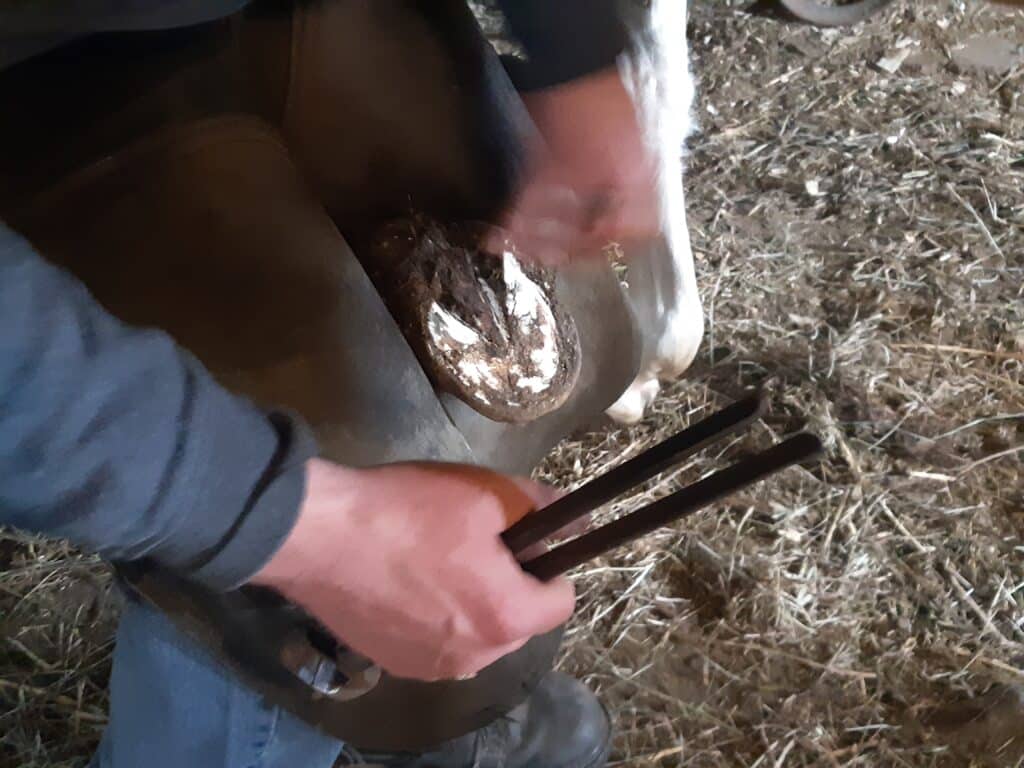
Introduction
Understanding the science behind hoof growth is crucial for any horse owner or caretaker. A horse’s hooves are not just a vital part of its anatomy; they are the foundation of its overall health and mobility. This article delves into the anatomy of the hoof, the growth process, and the factors influencing it, offering insights for optimal hoof care.
Anatomy of the Horse Hoof
The horse hoof is a marvel of natural engineering, comprising several key components: the hoof wall, sole, frog, and coronary band. The hoof wall, much like a human fingernail, is the hard, outer part that bears the weight. The sole is the underside of the hoof, and the frog, the V-shaped structure, aids in shock absorption. The coronary band, situated at the top of the hoof wall, is where new hoof growth originates.
The Growth Process
Understanding how a horse’s hoof grows is vital for effective care and maintenance. The process is continuous and is influenced by various internal and external factors.
Cellular Activity at the Coronary Band: The growth of the hoof begins at the coronary band, the area just below the hairline at the top of the hoof. This region is rich in blood vessels and is the primary source of the keratinized cells that form the hoof wall. These cells constantly divide and push older cells downward, much like how human fingernails grow.
Keratin – The Building Block: The primary component of the hoof wall is keratin, a tough, fibrous protein. The health and integrity of keratin are crucial for the hoof’s strength and resilience. The quality of keratin is largely dependent on the horse’s overall health and diet.
Growth Rate Variations: On average, a horse’s hoof grows approximately 1/4 to 1/2 inch per month. However, this rate is not constant and can vary based on the horse’s age, breed, and metabolic rate. Younger horses typically experience faster growth rates. Additionally, the front hooves usually grow slightly faster than the hind ones.
Seasonal Influences: Hoof growth tends to be faster in the warmer months compared to the colder months. This variation is thought to be linked to changes in blood flow and metabolism in response to external temperatures.
Impact of Nutrition and Exercise: Proper nutrition plays a key role in hoof growth. A diet deficient in essential nutrients like biotin, amino acids, and minerals can lead to poor hoof quality. Regular exercise is equally important as it stimulates blood flow to the hoof, nourishing and supporting growth.
Monitoring Growth for Health Indicators: Regularly monitoring hoof growth can provide insights into a horse’s health. Sudden changes in growth rate, texture, or color of the hoof can be early indicators of health issues and should prompt a consultation with a veterinarian or farrier.
Factors Influencing Hoof Growth
- Nutrition: A balanced diet rich in biotin, amino acids, and essential minerals is vital for healthy hoof growth. Poor nutrition can lead to weak, brittle hooves.
- Blood Flow: Good circulation is essential for hoof health. Regular exercise can promote better blood flow to the hooves.
- Age and Breed: Younger horses and certain breeds may experience faster hoof growth. Older horses or those with specific genetic traits might have slower growth.
- Environmental Conditions: Wet, muddy conditions or extremely dry environments can adversely affect hoof growth and health.
Common Hoof Problems and Growth
Issues like laminitis, a painful inflammation of the hoof, cracks, and thrush, a bacterial infection, can significantly impact hoof growth. Regular inspections are key to early detection and treatment of these conditions.
Often times a horse with that is prone to laminitis flare ups will have an added rate of growth requiring extra attention by the farrier and owner alike.
Hoof Care and Maintenance
Routine care, including proper trimming, shoeing, and cleaning, is essential for maintaining hoof health. Professional care from experienced farriers and veterinarians is indispensable, especially when dealing with hoof growth issues.
Conclusion
A deeper understanding of hoof growth not only empowers horse owners to provide better care but also highlights the importance of regular maintenance and professional check-ups. Healthy hooves are a cornerstone of a horse’s overall well-being.
Always consult with hoof care professionals for advice tailored to your horse’s specific needs.

Leave a Reply